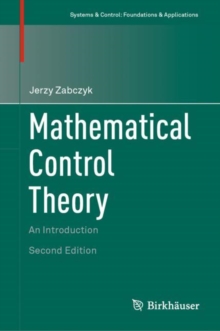
Set-Theoretic Methods in Control PDF
by Franco Blanchini, Stefano Miani
Part of the Systems & Control: Foundations & Applications series
Description
Many control problems can be naturally formulated, analyzed, and solved in a set-theoretic context.
Sets appear naturally when three aspects, which are crucial in control systems design, are considered: constraints, uncertainties, anddesignspeci?cations.Furthermore,setsarethemostappropriatelanguage to specify severalsystem performances, for instance when we areinterested in determining the domain of attraction, in measuring the e?ect of a persistent noise in a feedback loop or in bounding the error of an estimation algorithm.
From a conceptual point of view, the peculiarity of the material presented in this book lies in the fact that sets are not only terms of the formulation, but they play an active role in the solution of the problems as well.
Generally speaking, in the control theory context, all the techniques which are theore- cally based on some properties of subsets of the state-space could be referred to as set-theoretic methods.
The most popular and clear link is that with Lyapunov theory and positive invariance.
Lyapunov functions are positi- de?nite energy-type functions of the state variables, which have the property of being decreasing in time and are fundamental tools to guarantee stability.
Besides, their sublevel sets are positively invariant and thus their shape is quite meaningful to characterize the system dynamics, a key point which will be enlightened in the present book.
The invariance property will be shown to be fundamental in dealing with problems such as saturating control, noise suppression, model-predictive control, and many others.
Information
-
Download - Immediately Available
- Format:PDF
- Publisher:Birkhauser Boston
- Publication Date:05/10/2007
- Category:
- ISBN:9780817646066
Other Formats
- Hardback from £104.05
- PDF from £47.59
- Paperback / softback from £141.55
Information
-
Download - Immediately Available
- Format:PDF
- Publisher:Birkhauser Boston
- Publication Date:05/10/2007
- Category:
- ISBN:9780817646066










